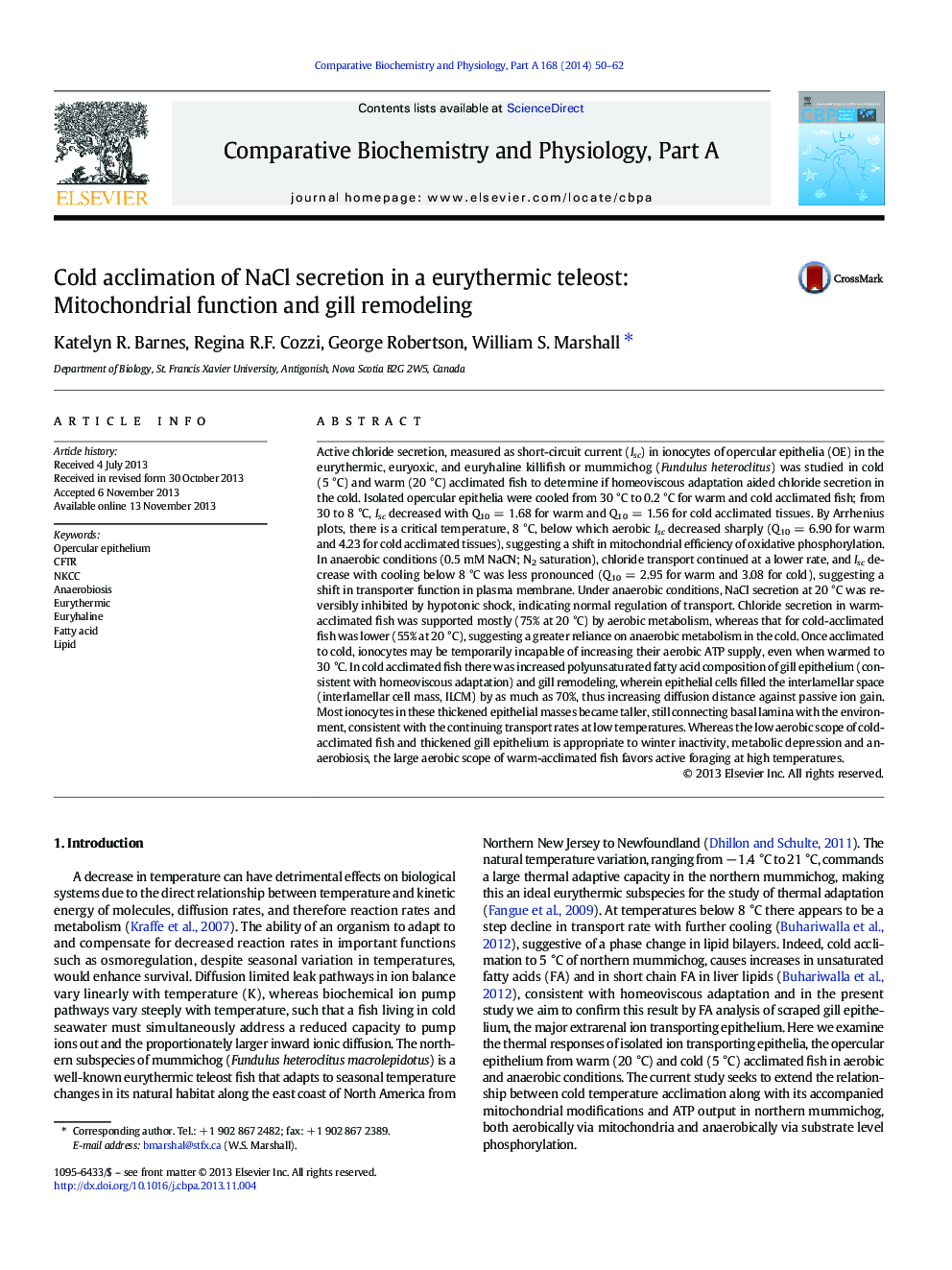| کد مقاله | کد نشریه | سال انتشار | مقاله انگلیسی | نسخه تمام متن |
|---|---|---|---|---|
| 1972261 | 1539019 | 2014 | 13 صفحه PDF | دانلود رایگان |

Active chloride secretion, measured as short-circuit current (Isc) in ionocytes of opercular epithelia (OE) in the eurythermic, euryoxic, and euryhaline killifish or mummichog (Fundulus heteroclitus) was studied in cold (5 °C) and warm (20 °C) acclimated fish to determine if homeoviscous adaptation aided chloride secretion in the cold. Isolated opercular epithelia were cooled from 30 °C to 0.2 °C for warm and cold acclimated fish; from 30 to 8 °C, Isc decreased with Q10 = 1.68 for warm and Q10 = 1.56 for cold acclimated tissues. By Arrhenius plots, there is a critical temperature, 8 °C, below which aerobic Isc decreased sharply (Q10 = 6.90 for warm and 4.23 for cold acclimated tissues), suggesting a shift in mitochondrial efficiency of oxidative phosphorylation. In anaerobic conditions (0.5 mM NaCN; N2 saturation), chloride transport continued at a lower rate, and Isc decrease with cooling below 8 °C was less pronounced (Q10 = 2.95 for warm and 3.08 for cold), suggesting a shift in transporter function in plasma membrane. Under anaerobic conditions, NaCl secretion at 20 °C was reversibly inhibited by hypotonic shock, indicating normal regulation of transport. Chloride secretion in warm-acclimated fish was supported mostly (75% at 20 °C) by aerobic metabolism, whereas that for cold-acclimated fish was lower (55% at 20 °C), suggesting a greater reliance on anaerobic metabolism in the cold. Once acclimated to cold, ionocytes may be temporarily incapable of increasing their aerobic ATP supply, even when warmed to 30 °C. In cold acclimated fish there was increased polyunsaturated fatty acid composition of gill epithelium (consistent with homeoviscous adaptation) and gill remodeling, wherein epithelial cells filled the interlamellar space (interlamellar cell mass, ILCM) by as much as 70%, thus increasing diffusion distance against passive ion gain. Most ionocytes in these thickened epithelial masses became taller, still connecting basal lamina with the environment, consistent with the continuing transport rates at low temperatures. Whereas the low aerobic scope of cold-acclimated fish and thickened gill epithelium is appropriate to winter inactivity, metabolic depression and anaerobiosis, the large aerobic scope of warm-acclimated fish favors active foraging at high temperatures.
Journal: Comparative Biochemistry and Physiology Part A: Molecular & Integrative Physiology - Volume 168, February 2014, Pages 50–62